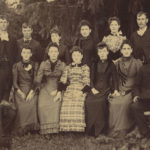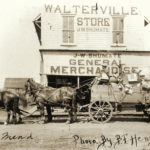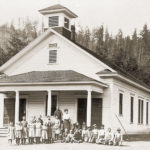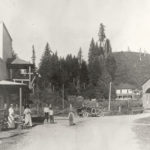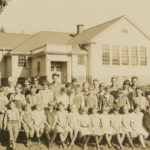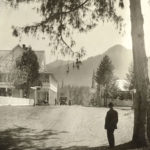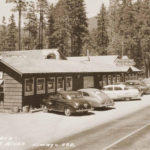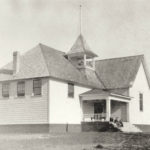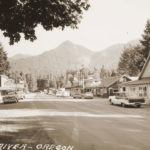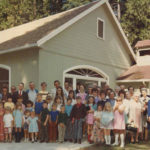The Panels
The Story
The McKenzie River has a number of unincorporated populated areas spread out over sixty miles, from Cedar Flat to McKenzie Bridge. Many of these communities grew from being simple stagecoach stops. Other grew from small timber camps, and Blue River really sprang from the miners coming in to find their fortunes on Gold Hill.
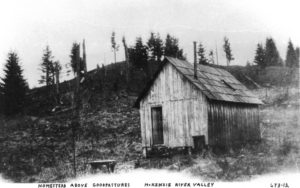 The spacing between most the communities aren’t a coincidence. They are spaced that way because that is how far the horses would go before they needed rest, to eat, or to be traded out with a new team.
The spacing between most the communities aren’t a coincidence. They are spaced that way because that is how far the horses would go before they needed rest, to eat, or to be traded out with a new team.
Cedar Flat sits closest to Springfield and Eugene. Samuel Sparks first settled in this town before moving up river and founding Blue River. Patsy’s Stage Stop stands on the very first stagecoach stop people would rest at while on their way up river.
Walterville is one of a few places the Millican Family settled in Oregon. The town is named for George Millican’s son Walter. George, among many other jobs, acted as postmaster of the town. Leaburg was also named by their postmaster, except Leander Cruzan named the town after himself. Leaburg grew over the years to have a dam, a hatchery, and the source of the Leaburg Canal.
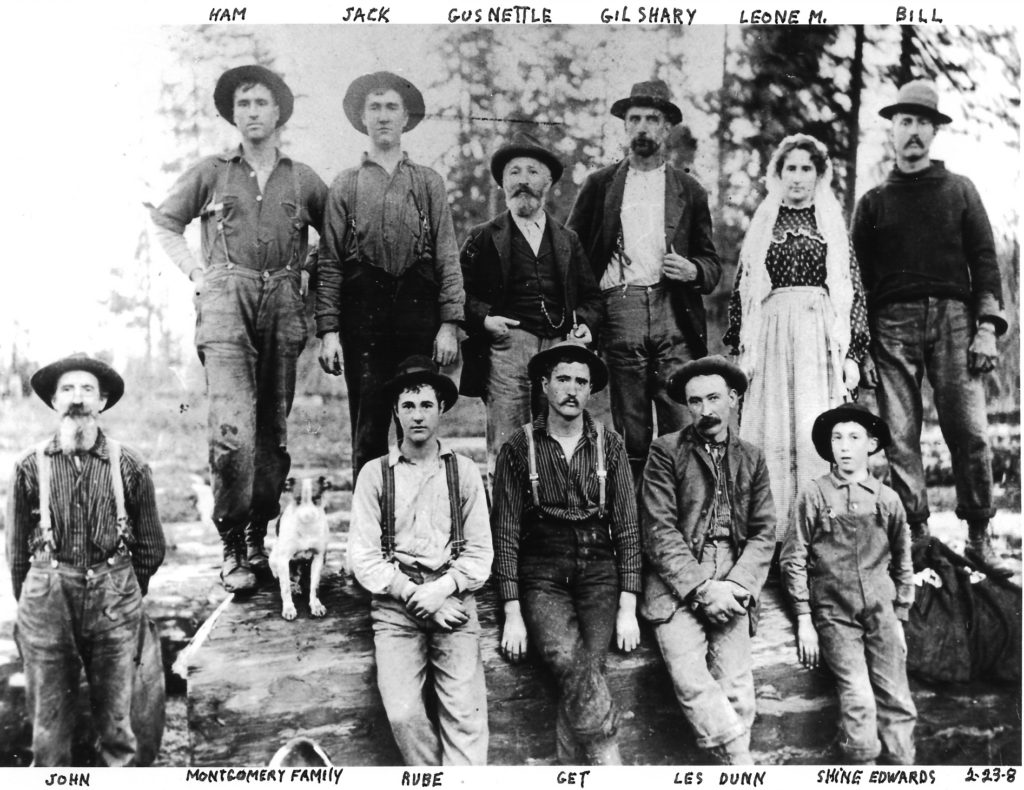
For many years the people who lived in Vida called their town Gate Creek, but due to confusion with another town in the Northwest territories called Gale Creek, the postmaster changed the name to Vida, after his daughter. Nimrod breaks the pattern of postmasters naming towns. In fact, not a whole lot is known on how Nimrod got its name. Blue River was founded in 1863, the same year they first found gold in the area. The same year Abraham Lincoln issued the Emancipation Proclamation. The residents of Rainbow loved fishing so much they named their town after their favorite McKenzie River fish, making it one of the only towns in the US named after a trout. Before McKenzie Bridge had its name people called it Strawberry Prairie because of the volume of wild berries that grew in the area.
Many of the pioneer families who homesteaded all those years ago have descendents still living on the McKenzie. The McKenzie River Valley is a hard place to move away from. Once you smell the air, taste the water, and make friends with the flora and fauna, you just can’t go anywhere else without feeling a sense of loss somehow.
Schools in the McKenzie River Valley
In the Beginning
They came to farm, to fish, to guide, to hunt, to mine, to log and to homestead. Early settlers chose to stay because of the incredible natural resources of the McKenzie River Valley. They stayed and married and had families.While settlements slowly increased, population was scattered. Parents schooled their children at home and often schooled their neighbors’ children. The first home classroom was in Vida in 1870 and the first schoolhouse was built there in 1872 on an old wagon road just west of the present Goodpasture Bridge.
East of the settlement of Walterville, the settlements of Deerhorn, Leaburg, Vida, Blue River and McKenzie Bridge slowly grew. During the next few years, one-room schoolhouses could be found from Walterville to McKenzie Bridge every six or seven miles. The history of those one-room schoolhouses includes the names of families whose children and great-grandchildren still live along the McKenzie. Their memories and stories create a unique perspective.
As population grew, it became commonplace to continue children’s education past elementary school. The one-room schoolhouse wasn’t adequate. In 1889, the Walterville School erected a separate building for upper grades. In Leaburg, in 1908, a two-story school was built. The top story collapsed after three years proving that a second story shouldn’t be an afterthought. No injuries! In 1923 a new school was built. Adjusting to changing population was a necessity. In 1890, the population in Nimrod and Elk Creek changed and one weekend the parents dismantled the school in Elk Creek and rebuilt it in Nimrod. In 1890, a one-room school was built in McKenzie Bridge and was soon outdated, overwhelmed by a construction boom. School took place in individual homes and vacant buildings.
Today, things have changed considerably. One-room schoolhouses have grown into districts which have consolidated. Buses take children to school. Population is relatively stable. The dams are built and their builders are gone; the gold mines are no longer viable and stagecoaches, livery stables, blacksmiths and sawmills are gone. We can see this area’s history all around us. Place names remind us of the early settlers and still-standing historical buildings take us back to earlier times.
